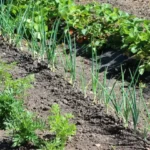I recently had friends over for a backyard barbecue and wanted to make a mint-infused drink. As I plucked the fresh mint leaves from my garden, my neighbor asked what else I was growing with this unique herb. It made me curious, and I started thinking about how to help its growth even more by planting the best companion plants for mint that would create an ecological balance and be a win-win for all my foliage.
The best mint companion plants include cabbage, cauliflower, and kale, herbs such as oregano and basil, and flowers like marigolds. Marigolds can help repel pests and benefit from mint’s aromatic properties. Avoid planting mint crops with different care and growth requirements, like lavender and rosemary.

Mint, with its refreshing aroma and versatile use, is known to be an invasive species in the garden as it can grow aggressively, taking over space occupied by other plants. Its vigorous growth can be both a blessing and a challenge. While having a bountiful supply of this delightful herb is lovely, choosing companion plants that will not interfere with its growth or inhibit the growth of other plants nearby is equally essential.
Growing popular herbs like mint around helpful companion plants requires a delicate balance, from understanding what thrives alongside particular plants to what might struggle in their shadow. So, whether you’re a seasoned gardener or just starting out, this companion planting guide will help you find the perfect neighbors for your mint.
Humble Highlights
- Discover how mint’s presence benefits various plants and enhances your garden’s health so you can grow more of this versatile herb and enhance the taste of many nearby plants.
- When selecting companions for your mints, save time by understanding these key factors so you can grow your mint without unnecessary challenges.
- Explore the ideal companion plants to enhance your mint’s growth and the companion plants to avoid so you can save money while confidently growing and harvesting fresh mint!
Understanding Mint Companion Plants
Companion planting is a practice that involves growing different plants together to achieve specific benefits. Benefits of companion planting with mint include pest control, improved growth, and enhanced flavor of nearby crops. Understanding the right companion plants is essential due to mints’ unique characteristics.
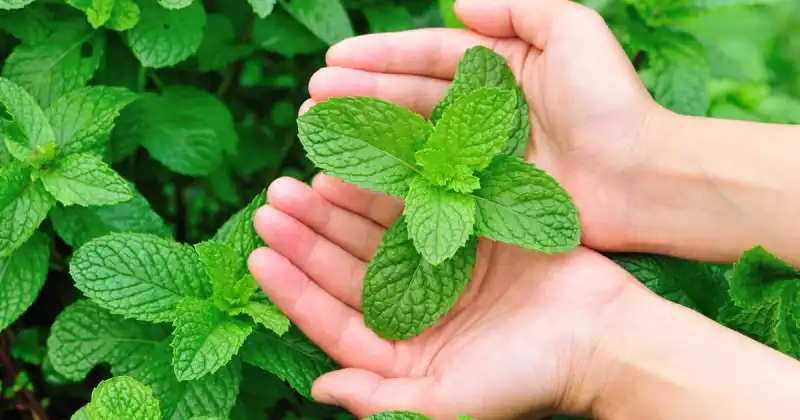
Keep in mind that mint is known to be an invasive species. When considering growing mint with companion plants, there are several key factors to consider. First and foremost, mints’ aggressive growth means they need ample space to spread without interfering with other plants, so careful spacing is essential. 1
Regarding soil and water needs, mint thrives in moist soil, so it should be paired with plants with similar water requirements to ensure a harmonious growing environment.
Finally, maintaining and harvesting the mint is crucial in managing its growth; regular pruning and harvesting can keep the mint’s growth in check and maintain a healthy relationship with its neighborly companion plants.
By considering the specific traits of mint, gardeners can create a thriving ecosystem that leverages the natural benefits of each plant.
Best Companion Plants For Mint
Mentha (mint) is a genus of about 25 species from the Lamiaceae family. Mint is a popular herb known for its aromatic leaves and versatile culinary and medicinal uses. Mints are also versatile companions in the garden. It pairs well with vegetables within the brassica family, like cabbage, broccoli, cauliflower, herbs like basil, and flowers like marigolds, iris, and rose.

The pungent scent of mint helps deter pests and attracts beneficial insects. While mints are known for their pest-repelling properties, they can still be susceptible to certain insects, such as whiteflies and aphids. These tiny insects can feed on the sap of the mint leaves, leading to discoloration and potential disease. 2
What Vegetables Grow Well With Mint
Gardeners often explore mint companion planting vegetables to enhance flavor profiles, promote growth, and create a more balanced ecosystem within their garden beds. Here’s a list of mint companion vegetable plants that grow well with mints:
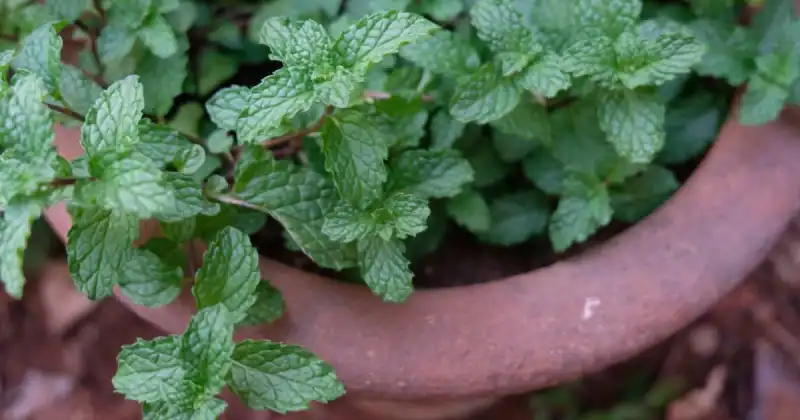
Brassicas
Brassicas (such as cabbage, cauliflower, broccoli, and kale) are generally more resistant to competitive pressures than other plants due to their large and sturdy root systems. They can handle mint’s potentially crowded growth habit a bit better, making them excellent mint companion plants.
Brassicas often produce larger flowers that attract beneficial insects, naturally decreasing pest populations. Moreover, combining mint and brassicas can contribute to a more diverse and visually appealing garden. These plants’ contrasting textures and colors can create an aesthetically pleasing arrangement. 3
Legumes
Recent research has found that when legumes like beans and peas are planted near mints, they become more resistant to pests. The scent of the mint (known as volatile organic compounds or VOCs) triggers something in the plants that makes them better at warding off harmful bugs. This unique characteristic has been observed in labs, fields, and greenhouses.
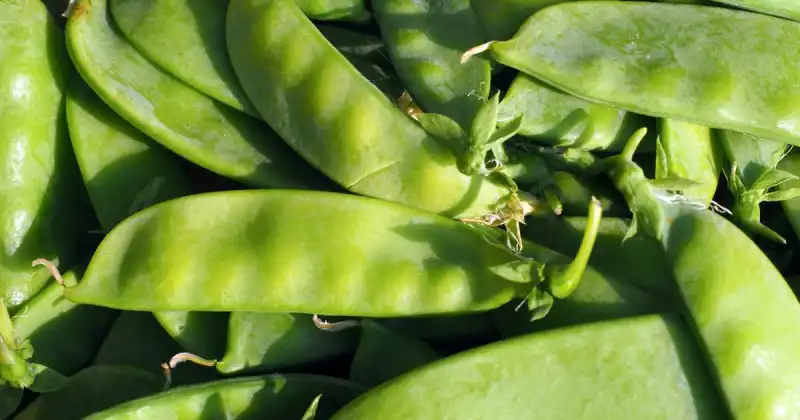
Although it’s been observed, scientists are still figuring out exactly how this process works. Current research indicates that it might be a combination of things, including how the plants respond to the mint and how the aroma of mint deters the bugs directly.
Conversely, legumes are known for their ability to fix nitrogen in the soil, which can enhance soil fertility and benefit neighboring plants, including mint. This symbiotic relationship can create a more balanced and healthy garden ecosystem.
Peppers: Mint And Peppers Companion Planting
Mints in your garden can attract beneficial insects like bees, making this herb an invaluable companion plant to grow alongside peppers, prone to pests like spider mites. Mint can help effectively deter ants, aphids, cabbage flies, loopers, and flea beetles. 4
Additionally, pepper and mint make great companions because they prefer similar growing conditions. They enjoy lots of sunlight and moist soil and flourish together in the garden.

Tomatoes: Mint And Tomatoes Companion Planting
When mints and tomatoes grow together, they create a helpful partnership. Apart from being a natural pest deterrent, mint can also encourage the proliferation of certain tiny worms called nematodes, which benefits the soil. These nematodes break down old plant material, freeing up essential nutrients for mint and tomato plants.
On the other hand, tomato plants, with their upright growth and broad leaves, can provide shade for the mint plants growing beneath them. This shade helps moderate the soil’s temperature, preventing it from becoming too hot and reducing moisture evaporation. This microclimate created by the tomato plants can help mint maintain optimal growth conditions, especially during hot weather, making tomatoes fantastic plant companions for mint.
If you’re concerned that mint may aggressively take over your garden and effectively crowd out other foliage, consider planting it in pots or within barriers to contain its spread. Pots, baskets, rocks, and pavers all make excellent options to help control this ambitious herb.
One of the reservations many backyard gardeners have with mint is its aggressive growth. But in this video, you can lessen the chances of this popular herb becoming invasive in your space and enjoy this easy-to-cultivate plant indoors and out.
What Herbs Grow Well With Mint
Several excellent herbs make wonderful mint companion plants, including:
- Basil
- Oregano
- Dill
- Chives

Basil: Mint And Basil Companion Planting
Mint is a great companion plant for basil when planted together with careful consideration of their needs and growth habits. In specific setups, they can complement each other effectively. Mint is known for its rapid growth and tendency to spread, making it an excellent ground cover that can help deter pests with its pungent aroma.
On the other hand, basil is an annual herb with aromatic leaves often used in cooking. When planted near your mint, basil can benefit from the mint’s pest-repelling qualities.
Oregano: Mint And Oregano Companion Planting
Both mint and oregano are perennial herbs that enjoy similar growing conditions, preferring moist soil and partial to full sun, making them compatible companions in the garden. As previously mentioned. mints are known for their intense aroma, which can deter common garden pests like aphids and ants.
Interestingly, oregano also has some pest-repelling properties, and planting it next to mint can help create a more robust defense against unwanted insects. Additionally, mints and oregano can attract pollinators like bees and butterflies and predatory insects like ladybugs, which can help maintain a balanced ecosystem in the garden. 5
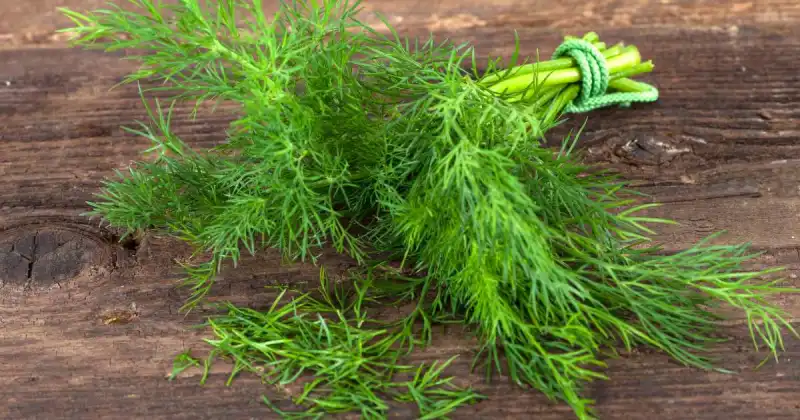
Dill: Mint And Dill Companion Planting
Planting dill and mint together can help benefit your garden in several ways. Dill attracts beneficial insects, such as wasps and predatory flies, which helps to reduce the presence of pests like aphids and ants. The strong aroma from the mint plant itself also acts as a deterrent for these pests.
Chives: Mint And Chives Companion Planting
Chives and mint can be grown together successfully. Chives, like mint, act as natural pest deterrents while complementing mint’s growth. Both herbs thrive in similar conditions, preferring moist soil and partial to full sun. Their shared requirements and harmonious coexistence make chives suitable as mint plant companions in the garden. 6
Flower Companions: Flowers That Grow Well With Mint
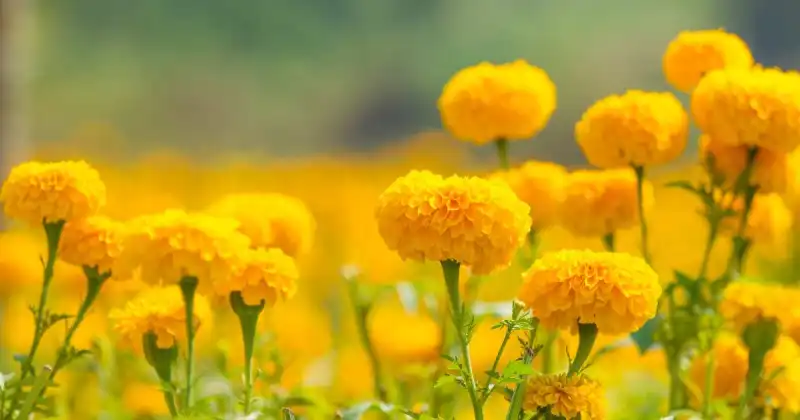
Marigolds: Mint and Marigold Companion Planting
Marigolds and mint make for a fascinating companion planting combination that offers various benefits to your garden. Marigolds, with their vibrant and colorful blooms, not only enhance your garden’s visual appeal but also serve as natural pest repellents. These flowers emit a scent that deters many pests, helping to protect your mint plants from potential infestations.
Conversely, mint provides a refreshing aroma and can shade the soil around marigold roots. This shading helps keep the soil cooler and prevents excessive evaporation, promoting healthier marigold growth.
Roses: Mint And Rose Companion Planting
Surprisingly, roses are great companion flowers for mints. The strong scent of mint can deter pests that might otherwise harm roses. Depending on the layout of your garden, the roses’ foliage and stems could provide some shade to the mint, which often appreciates a bit of protection from harsh sunlight. Additionally, planting mint near roses offers wind protection to the mint, preventing excessive drying of the soil and reducing water stress. 7
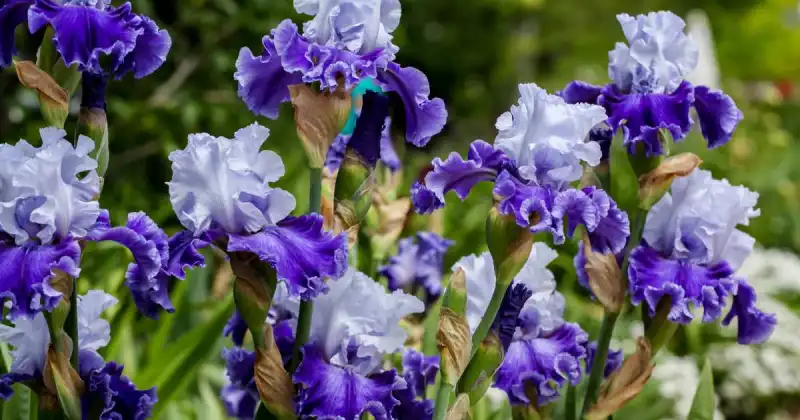
Irises: Mint And Iris Companion Planting
Iris and mint can thrive together as companion plants. Iris, with its striking blooms and mint, with its fragrant leaves, create a visually appealing combination. Mint’s aroma also helps repel pests that might bother irises. Additionally, mint’s ground-covering nature can help keep the soil cool and moist, benefiting both plants.
Regularly trimming back mint plants is essential to control their growth and prevent them from spreading excessively. Prune your mint regularly, and unless contained within a natural barrier or container, be sure it doesn’t begin to creep throughout your garden beds, thinning when applicable.
What Not To Plant With Mint: Bad Companion Plants

Rosemary: Mint And Rosemary Companion Planting
As members of the mint family, you probably wonder, can you plant mint and rosemary together? Rosemary and mint are generally considered bad companions in the garden due to their differing growth habits and care requirements. Rosemary thrives in well-draining, relatively dry soil and prefers full sun, while mint prefers consistently moist soil and can tolerate partial shade.
Lavender: Mint And Lavender Companion Planting
Lavenders are lousy companion plants for mint because of their different needs regarding soil, sunlight, and growth. Lavender prefers dry soil and full sun, while mint does better in moist soil with partial shade. Plus, lavender is a woody shrub, while mint spreads quickly, making these two plants natural competitors for resources and inhibiting each other’s growth. 8
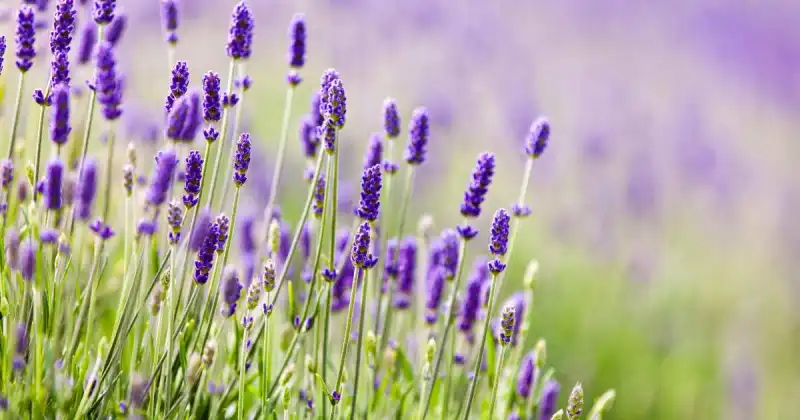
Conclusion
Mint companion planting offers terrific opportunities and restrictive challenges for gardeners. While planting mint alongside other plants can provide benefits like repelling pests and attracting beneficial insects, its vigorous growth and tendency to take over can be a concern, which makes gardeners quite hesitant to try companion planting with it.
The best companion plants for mint include brassicas, legumes, and plants that prefer similar growing conditions. Among the plants that should never be planted near mints are rosemary, lavender, and other foliage with different growing needs.
You can create a harmonious and productive garden by selecting suitable companions, providing adequate space, providing regular care, and understanding which plants to avoid near your mints.
What do you currently grow alongside mint? Perhaps you cultivate it with an option on our list, something else entirely, or even in its own container. We’d love to know your setup, so take a moment now and drop us a line in the comments below!
SOURCES
- Scientific Reports – Mint Companion Plants Enhance The Attraction Of The Generalist Predator Nesidiocoris Tenuis According To Its Experiences Of Conspecific Mint Volatiles
- Frontiers – Intercropping With Peppermint Increases Ground Dwelling Insect And Pollinator Abundance And Decreases Drosophila Suzukii In Fruit
- University Of Delaware – The “New” Companion Planting: Adding Diversity To The Garden
- National Gardening Association – Companion Planting: A Reliable Option Or Nonsense?
- Royal Horticultural Society – How To Grow Mint
- National Library Of Medicine, National Center For Biotechnology Information – Soil Amendments With Spearmint, Peppermint, And Rosemary Enhance The Community Of Free-Living Nematodes And Improve Soil Quality, While Having Strikingly Different Effects On Plant Growth
- ResearchGate – Plant Parasitic Nematodes Associated With Different Mentha Species
- University Of Florida, Gardening Solutions – Mint






